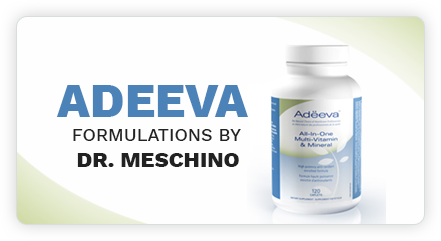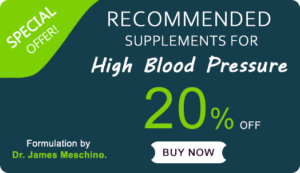
LMU 80 – The Omega-3 Puzzle: Unveiling the Cancer-Preventing Power
Source: Journal of Biochemistry (December 2017)
Lifestyle Medicine Update (January 31, 2018)
Introduction
Over the years, the scientific spotlight has shone brightly on the potential cancer-fighting properties of omega-3 fats. This intriguing journey has woven together human observational studies, experimental research with animals, and the complex cellular dance of prostaglandin series-3 (PG-3) – mini-hormones that arise from omega-3 fats. These PG-3 molecules are skilled orchestrators of cell division, holding the key to cancer risk reduction by curbing the rapid replication of cells and preserving the integrity of DNA. Moreover, the connection between omega-3 fats and telomeres, the guardians of DNA’s end, adds another layer to the saga of cancer prevention.
Omega-3 Fats: Navigating the Landscape
Within the realm of omega-3 fats lies a triumvirate of players. Flaxseed oil emerges with its 58% omega-3 fat content, setting the stage for plant-based omega-3 fats. Distinguished from this, fish and fish oil bring forth EPA and DHA – the dynamic duo transforming into PG-3 within the body. It is EPA that takes the reins, slowing cellular replication and elongating telomeres, fortifying the battle against cancer. With this landscape set, the question arises: Is EPA-laden fish oil superior in preventing cancer compared to ALA-containing flaxseed oil? This query became the focus of a study at the University of Guelph, whose findings graced the Journal of Biochemistry in December 2017.
A Pioneering Study: Plant-Based vs. Fish Oil Omega-3s
Venturing into uncharted territory, the University of Guelph embarked on a study poised to reshape cancer prevention strategies. The study’s canvas stretched across breast tumor development, exploring the potency of plant-based and fish oil omega-3 fats. The spotlight shone on a breed of mice harboring the aggressive HER-2 form of human breast cancer, notorious for its 25% prevalence and grim prognosis. These mice, nurtured from their inception, encountered the two types of omega-3 fats – plant-based and fish oil-based.
The Tapestry Unveiled: Fish Oil’s Triumph
As the study’s tapestry unravelled, a revelation emerged. Fish oil-based omega-3 fats unfurled their prowess, diminishing tumor size by a remarkable 60-70% and curbing tumor numbers by 30%. This symphony of prevention was orchestrated by EPA and DHA, which deftly activated immune system genes while obstructing the pathways of tumor growth. The conclusion drawn was compelling – fish oil’s omega-3s wielded superior influence in this intricate dance against breast cancer.
Plant-Based Omegas Shine Bright: The Flaxseed Perspective
Yet, amidst the symphony of fish oil’s triumph, the plant-based omega-3 fats held their own. Plant-derived sources, especially the beloved flaxseed oil, showcased their potential. Notably, the researchers affirmed that higher doses of plant-based omega-3s yielded the same cancer-preventive effect. This revelation underscores the diversity of pathways through which omega-3 fats contribute to the grand mosaic of cancer defence.
The Conductor’s Verdict: Dietary Harmony
The study’s conductor, David W.L. Ma, offered his insights on the symphony’s resonance. He conveyed that omega-3s orchestrate a multifaceted composition – activating immune genes, blocking tumor growth avenues, and nurturing a defence against breast cancer. A nod to the North American diet revealed a dearth of these vital nutrients, highlighting an opportunity for transformation. The study’s dosages prompted a suggestion – two to three servings of fish weekly could mirror the cancer-preventive effect.
Beyond the Study: Nurturing Comprehensive Well-Being
As the study’s echoes reverberate, it beckons us to ponder the broader canvas of well-being. Essential fatty acid supplements enter the stage, encompassing fish oil, flaxseed oil, and borage seed oil. This trinity weaves a narrative of health, with borage seed oil playing a vital role in boosting prostaglandin series-1 (PG-1) synthesis. PG-1’s anti-inflammatory prowess, coupled with its potential in cancer prevention, heightens the value of this symphony of supplements.
A Symphony’s Encore: A Call to Action
The study unfurls an invitation, urging us to embrace dietary choices as a gateway to empowered health. The nexus between omega-3 fats and cancer prevention emerges as a reminder – the choices we make echo in our well-being. As the curtain falls, the symphony of omega-3 fats continues to resound, painting a portrait of vibrancy, vitality, and longevity.
References
- Research Study: Jiajie Liu, Salma A. Abdelmagid, Christopher J. Pinelli, Jennifer M. Monk, Danyelle M. Liddle, Lyn M. Hillyer, Barbora Hucik, Anjali Silva, Sanjeena Subedi, Geoffrey A. Wood, Lindsay E. Robinson, William J. Muller, David W.L. Ma. Marine fish oil is more potent than plant-based n-3 polyunsaturated fatty acids in the prevention of mammary tumours. The Journal of Nutritional Biochemistry, 2017 [10.1016/j.jnutbio.2017.12.011]
http://10.1016/j.jnutbio.2017.12.011

Dr. James Meschino
ABOUT THE AUTHOR
Dr. James Meschino, DC, MS, ROHP, is an educator, author, and researcher having lectured to thousands of healthcare professionals across North America. He holds a Master’s Degree in Science with specialties in human nutrition and biology and is recognized as an expert in the field of nutrition, anti-aging, fitness, and wellness as well as the author of numerous books.













